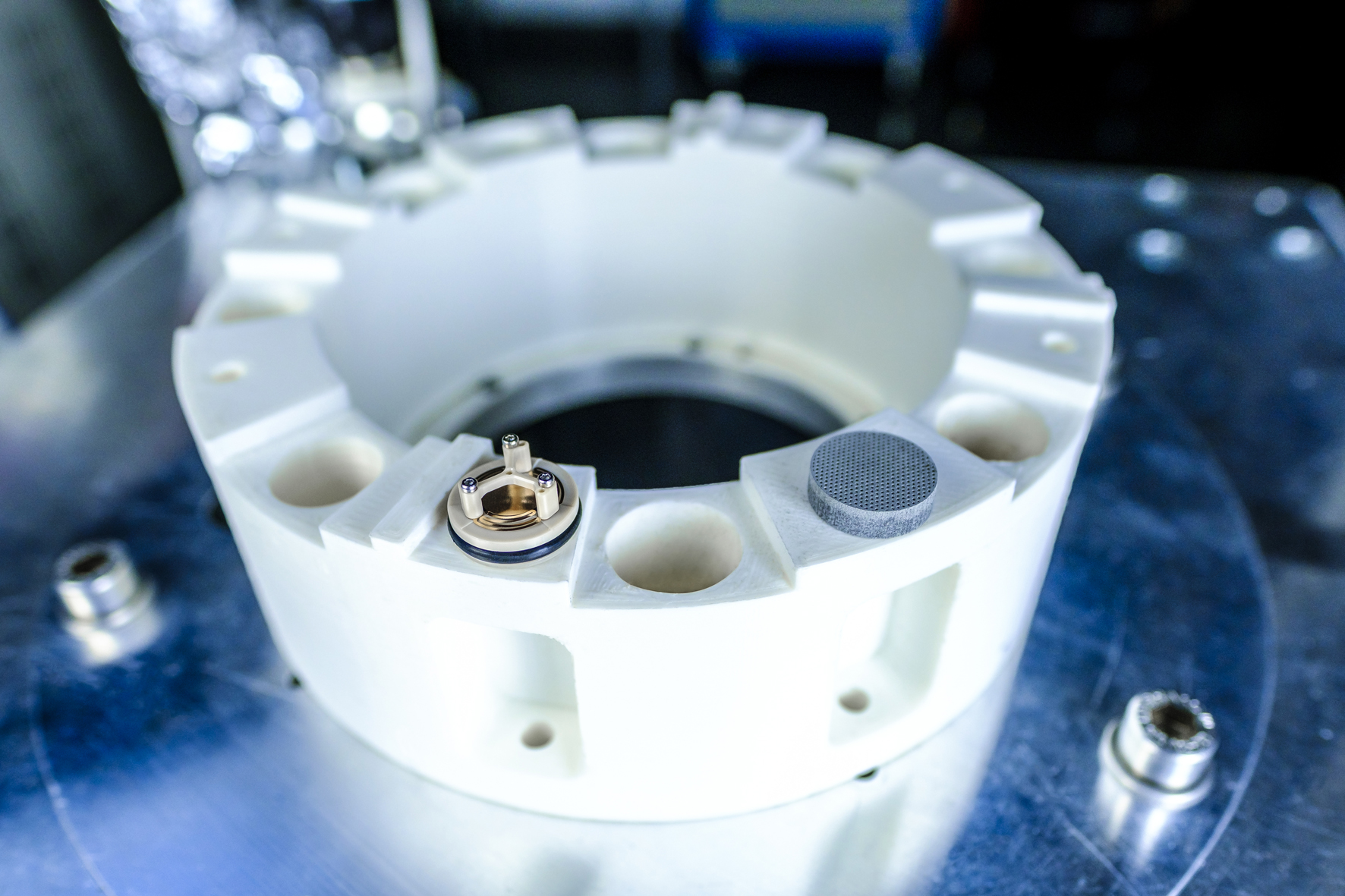World record: power density increased in magnetocaloric cooling systems
Magnetocaloric systems are a promising new approach in a new generation of cooling technology that functions without climate-damaging coolants. With an innovative concept for heat transfer, researchers at Fraunhofer IPM together with industrial partners have been able to significantly increase the efficiency of magnetocaloric cooling systems. As part of a follow-up project, the team plans to apply this new technology to a refrigerator for medical products and further develop the technology to work towards marketability.

Caloric cooling systems do not rely on harmful coolants, such as hydrofluorocarbons (HFCs). This makes the solid-state water pumps a promising alternative to compressor technology, which is the current standard for nearly all cooling systems. When it comes to the theoretical maximum efficiency level, caloric systems are also far superior to compressors. In a magnetocaloric system, a magnetocaloric material is heated using magnetization. For its systems, Fraunhofer IPM uses a lanthanum-iron-silicon – an alloy which is magnetocaloric at room temperature. The magnetocaloric material was developed by Vacuumschmelze GmbH & Co. KG and can be produced cost-effectively on an industrial scale. The generated heat is dissipated through a heat sink. Once the magnetic field is removed, the material cools down to below the initial temperature and is able to absorb thermal energy from a heat source. This cycle of heating and cooling creates a cooling effect.
Efficient heat transfer using heat pipes
The main reason that current magnetocaloric cooling systems have a low power density has to do with heat transfer. “Heat dissipation is a crucial factor in the efficiency of magnetocaloric cooling systems,” says Dr. Kilian Bartholomé, who heads up the project. “Our cooling concept is based on heat pipes that work through the evaporation and condensation of a fluid, in our case, water. Water absorbs a lot of energy when it changes from a liquid to a gaseous state, and we use this effect to very efficiently transfer energy.”
Until now, heat was transferred in magnetocaloric cooling systems by pumping liquid through small granules, according to the principle of Active Magnetic Regeneration (AMR). Since the heat transfer is quite low, this approach only works up to a certain cycle frequency; beyond that point, considerable pressure loss occurs, which adversely affects the efficiency of the systems. Frauenhofer IPM’s patented concept uses latent heat transfer in a heat pipe: This is the process by which fluid evaporates on the warm side of a hermetically sealed pipe and condenses on the cold side of the pipe, the heat sink, allowing the transfer of heat. The individual caloric segments are activated one after another and dissipate heat according to the principle of a thermal diode. “Using this systems approach, we are able to achieve a higher cycle frequency, going far and above the comparable power density of current systems,” says Bartholomé. “With a frequency of 12.5 W per gram of magnetocaloric material, we are the world leaders.”
Considering the growing market for heating, ventilation, and air conditioning (HVAC), innovative technologies are very much in demand. The project consortium is first focusing in on medical technology, a market in which there are extremely high standards for reliability. The follow-up project, which started in September, aims to construct a lab refrigerator prototype in close cooperation with the cooling technology manufacturer Philipp Kirsch GmbH, Vacuumschmelze GmbH & Co. KG and the company GSI Technology. The pandemic has shown once again how important reliably cooling technology is for medical technology, for example in terms of vaccination logistics.
The MagMed project
The MagMed project is funded by the Federal Ministry for Economic Affairs and Energy (FKZ 03ET1478).
Project-executing organization: Forschungszentrum Jülich GmbH
Consortium manager: Philipp Kirsch GmbH
Project partners: Fraunhofer IPM, Vacuumschmelze GmbH & Co. KG, Philipp Kirsch GmbH, GSI Technology UG
Project term: Magmed 1: June 2017 – May 2021
Funding budget Magmed 1: 1.729.074 EUR
Project term: Magmed 2: October 2021 – September 2024 (scheduled)
